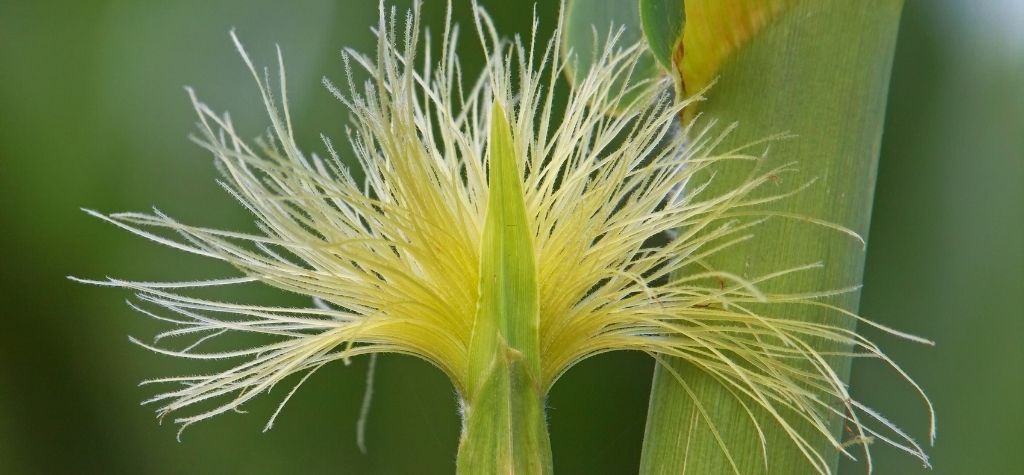In 2025, sustainable fashion has reached the eyewear industry in an unexpected way—Eco‑Flex temples made from corn silk. These frames promise to be lightweight, flexible, biodegradable, and stylish, appealing to consumers seeking eco‑friendly alternatives to plastic or metal glasses.
But are they really a groundbreaking innovation, or just another greenwashing marketing tactic?
What Are Eco‑Flex Temples and How Are They Made?
The Role of Corn Silk in Sustainable Eyewear
Corn silk—traditionally considered agricultural waste—is now being processed into bioplastics. When combined with plant‑based polymers, it creates a flexible material suitable for eyeglass temples.
How the Material Is Processed for Eyeglass Frames
The fibers are extracted, purified, and blended with biodegradable resins, forming a lightweight yet durable composite. This material is then molded into temples and frames with a natural, earthy finish.
Why Eyewear Brands Are Turning to Corn Silk in 2025

Demand for Eco‑Friendly Fashion Accessories
Consumers are increasingly favoring sustainable products, pushing eyewear brands to experiment with plant‑based materials.
Reducing Plastic Waste in Eyewear Production
Traditional eyewear manufacturing relies heavily on acetate and petroleum‑based plastics, which are difficult to recycle. Corn silk reduces dependency on fossil fuels in production.
Benefits of Eco‑Flex Temples Made from Corn Silk
Lightweight, Flexible, and Biodegradable
Corn silk frames are lighter than acetate, flexible for better comfort, and biodegradable, reducing their long‑term environmental footprint.
Unique Texture and Design Possibilities
The natural fibers create distinctive patterns, giving each pair of frames a unique look, unlike mass‑produced plastics.
Are Corn Silk Temples Durable Enough for Everyday Use?
Lab Tests on Strength and Flexibility
Early testing shows that corn silk composites are comparable to lightweight plastics in flexibility, but slightly less impact‑resistant.
How They Compare to Plastic and Metal Frames
- Versus acetate: Lighter and more sustainable, but potentially less long‑lasting.
- Versus metal: More comfortable for extended wear, but less adjustable.
Potential Downsides and Consumer Concerns
Longevity and Wear Resistance
Because these frames lack the hardness of plastic or metal, they may scratch or degrade faster, especially in humid conditions.
Higher Price Points for Sustainable Materials
Corn silk frames cost 20–40% more due to specialized processing and lower production volumes.
Expert Opinions: Are Corn Silk Frames Truly Eco‑Friendly?

The Environmental Impact of Corn‑Based Plastics
While corn silk reduces waste, large‑scale corn farming requires fertilizers and water. Some experts warn that “plant‑based” doesn’t always mean sustainable.
Are They Really Biodegradable?
Many corn‑based plastics require industrial composting to break down properly. Without proper disposal, they may behave similar to traditional plastics.
Fashion Meets Sustainability: Celebrity and Brand Adoption
Brands Leading the Eco‑Flex Eyewear Trend
Labels like Gentle Monster, Warby Parker, and Japanese boutique eyewear brands have launched limited‑edition corn silk collections.
Stars and Influencers Spotted Wearing Corn Silk Frames
Celebrities including Zendaya, Timothée Chalamet, and BLACKPINK’s Jennie have been seen endorsing eco‑friendly eyewear, fueling the trend.
How to Choose the Right Eco‑Friendly Glasses in 2025
Tips for Finding Verified Sustainable Eyewear
✅ Look for third‑party certifications (e.g., USDA Biobased, EcoCert).
✅ Check brand transparency on sourcing and manufacturing.
✅ Avoid “greenwashing” claims without proof.
Certifications and Labels to Look For
- USDA Certified Biobased Product
- FSC or PEFC Certified Materials
- Carbon Neutral or Climate Positive Branding
FAQs About Eco‑Flex Temples and Corn Silk Frames
1. Are corn silk frames as durable as regular glasses?
Not quite—they’re flexible but may degrade faster with daily wear.
2. Are they really biodegradable?
Yes, but mostly under industrial composting conditions.
3. Are corn silk glasses safe for sensitive skin?
Yes—most are hypoallergenic and free from harsh chemicals.
4. How much do they cost?
Typically $200–$400, depending on the brand.
5. Do they look different from regular frames?
Yes, they have unique textures and natural tones.
6. Are they recyclable?
Some parts may be recyclable, but bioplastics often require specialized facilities.
Conclusion: Genius Innovation or Just Marketing Hype?
Eco‑Flex temples made from corn silk are a step forward in sustainable fashion, offering lighter, plant‑based eyewear with unique designs.
However, they’re not a perfect solution—questions remain about durability, biodegradability, and large‑scale environmental impact.
Whether genius or gimmick, these frames reflect a growing shift toward eco‑friendly materials in everyday products. As technology improves, we may see even more sustainable options for eyewear in the coming years.

